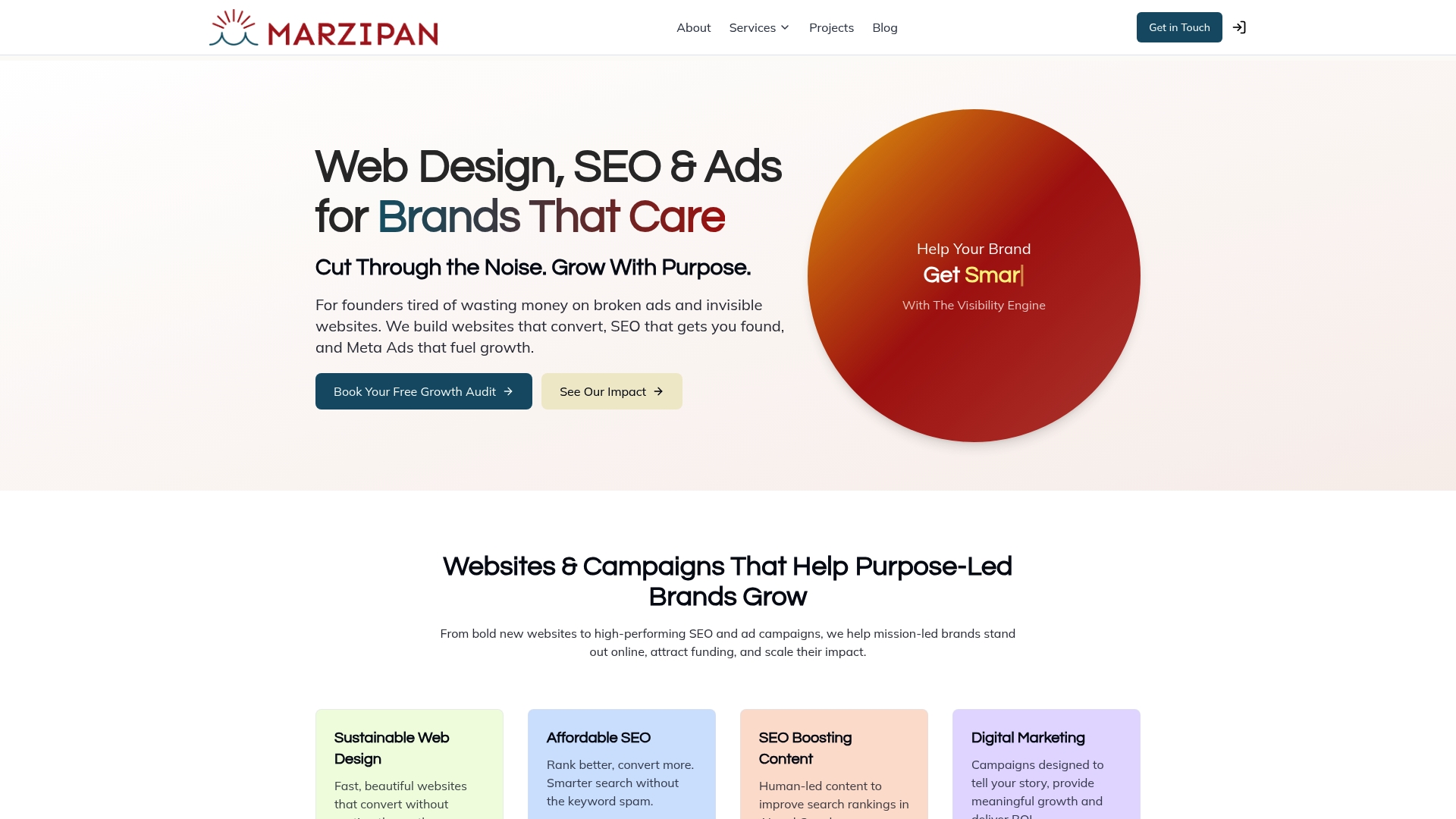Understanding Mobile-First Design Explained
Mobile-first design is changing how we create digital experiences. Mobile devices now generate over 50% of global website traffic, so starting with smaller screens is not just smart but necessary. Yet, most people still think desktop comes first and mobile is an afterthought. The real shift is now designers and developers are building for your phone before they even glance at your laptop, and that is what really makes the difference.
Table of Contents
- What Is Mobile-First Design?
- Why Is Mobile-First Design Important?
- How Mobile-First Design Works
- Key Concepts In Mobile-First Design
- Real-World Applications Of Mobile-First Design
Quick Summary
| Takeaway | Explanation |
|---|---|
| Prioritise mobile design first | Focus on mobile experiences initially, then enhance for larger screens. This approach improves usability across devices. |
| Enhance performance for mobile | Optimise loading times and user interactions, ensuring a fast experience that meets user expectations. |
| Utilise responsive design principles | Implement fluid grid systems and adaptive layouts to ensure your site functions smoothly on various devices. |
| Focus on user-centric design | Design with mobile users in mind, considering touch interactions and accessibility to improve engagement. |
| Embrace progressive enhancement | Start with core features on mobile and gradually add complexity for larger displays, ensuring functionality remains robust. |
What is Mobile-First Design?
Mobile-first design represents a strategic approach to web development where designers and developers prioritise creating digital experiences specifically for mobile devices before adapting them for larger screens. This methodology fundamentally shifts traditional design practices by starting with the smallest screen size and progressively enhancing the experience for larger displays.
To clarify the distinction between traditional desktop-first and mobile-first design approaches, the following table summarises their key differences in focus, workflow, and outcomes.
| Approach | Starting Point | Design Focus | User Experience Prioritised | Adaptation Method |
|---|---|---|---|---|
| Desktop-First | Large screens | Full-featured layouts, complex interactions | Desktop users | Scales down to mobile, often with compromises |
| Mobile-First | Small screens | Essential content, minimalist interface | Mobile users | Progressive enhancement for larger displays |
Understanding the Core Concept
Traditionally, web design followed a desktop-centric approach where websites were initially crafted for larger screens and then scaled down for mobile devices. Mobile-first design inverts this model, recognising that mobile internet usage has dramatically surpassed desktop browsing.
 Google’s mobile-first indexing underscores this shift, emphasising that websites must perform exceptionally well on mobile platforms.
Google’s mobile-first indexing underscores this shift, emphasising that websites must perform exceptionally well on mobile platforms.
The core philosophy behind mobile-first design involves several critical considerations:
- Constraint-Driven Creativity: Designing for smaller screens forces designers to prioritise essential content and functionality
- Performance Optimization: Mobile-first approaches inherently promote faster loading times and leaner user interfaces
- User-Centric Experience: Directly addresses the growing mobile user base’s specific interaction needs
Technical Implementation Principles
Implementing mobile-first design requires a comprehensive understanding of responsive web design principles. Designers must consider multiple aspects:
- Screen size limitations demand intelligent content hierarchy
- Touch-based interactions require larger, more accessible interface elements
- Performance becomes paramount, with minimalistic design approaches
By starting design processes on mobile platforms, developers can create more intentional, streamlined digital experiences that translate effectively across multiple device types.
Here is a table outlining the core techniques and features central to implementing mobile-first design, providing a concise reference for designers and developers.
| Feature/Technique | Purpose | Benefit for Mobile-First Design |
|---|---|---|
| Fluid Grid Systems | Create layouts with percentage-based units | Ensures adaptability across devices |
| Flexible Media | Serve images and video that adjust to screens | Maintains visual clarity and performance |
| CSS Breakpoints | Define transitions for multiple screen sizes | Delivers optimised layouts on all devices |
| Touch-friendly Elements | Design larger buttons and controls | Improves usability on touch screens |
| Performance Optimisation | Streamline code and resources | Reduces loading times and data usage |
| Progressive Enhancement | Add complexity for larger screens | Maintains robust functionality everywhere |
| This approach ensures that core content and functionality remain consistent while adapting gracefully to different screen dimensions and user interaction methods. |
Ultimately, mobile-first design is not just a technical strategy but a user-experience philosophy that recognises the primacy of mobile devices in contemporary digital interactions.
Why is Mobile-First Design Important?
Mobile-first design has emerged as a critical strategy for businesses and web developers seeking to create effective digital experiences in an increasingly mobile-driven world. Its importance extends far beyond aesthetic considerations, impacting user engagement, search engine performance, and overall digital success.
User Experience and Accessibility
In today’s digital landscape, mobile devices are the primary internet access point for millions of users. Research from Statista indicates that mobile devices generate over 50% of global website traffic, making mobile-first design not just a trend but a necessity. Responsive design ensures that users can seamlessly interact with websites regardless of their device, creating a consistent and accessible digital experience.
Key benefits of prioritising mobile-first design include:
- Improved user engagement and reduced bounce rates
- Enhanced accessibility across diverse device types
- Better adaptation to varied user interaction methods
Search Engine Performance and Visibility
Search engines like Google have explicitly prioritised mobile-friendly websites in their ranking algorithms. Our guide on understanding web design highlights how mobile optimization directly influences digital visibility. Websites that load quickly, display correctly, and provide smooth navigation on mobile devices are more likely to achieve higher search engine rankings.
Critical performance considerations include:
- Faster page loading speeds on mobile networks
- Reduced data consumption for users
- Improved search engine indexing and ranking potential
Moreover, mobile-first design represents a strategic approach to meeting user expectations. By designing for mobile platforms initially, developers create more focused, streamlined digital experiences that translate effectively across different screen sizes and interaction paradigms. This approach ensures that core content remains accessible and engaging, regardless of the device being used.
Ultimately, mobile-first design is not merely a technical requirement but a fundamental strategy for creating inclusive, performant, and user-centric digital experiences in an increasingly mobile-dependent world.
How Mobile-First Design Works
Mobile-first design operates through a strategic and systematic approach that transforms how digital experiences are conceptualised, created, and implemented across different technological platforms. This methodology relies on specific technical principles and design strategies that prioritise mobile user experiences from the initial development stages.
Progressive Enhancement Approach
The fundamental mechanism of mobile-first design revolves around the progressive enhancement strategy. Unlike traditional design methods, this approach begins with designing for the smallest screen size and systematically expanding functionality and visual complexity for larger displays. W3C’s responsive web design guidelines outline this principle as a critical method for creating adaptive digital experiences.
Key technical characteristics of progressive enhancement include:
- Starting with core content and fundamental functionality
- Adding complexity and visual elements incrementally
- Ensuring basic user experience remains consistent across devices
Technical Implementation Techniques
Developers utilise several technical approaches to implement mobile-first design effectively:
- Fluid Grid Systems: Implementing percentage-based layouts that adapt seamlessly
- Flexible Media: Using responsive images and media queries
- CSS Breakpoints: Creating strategic transition points for different screen sizes
These techniques enable websites to respond dynamically to various device characteristics, ensuring optimal performance and user experience. Responsive frameworks like Bootstrap and Foundation have standardised many of these implementation strategies, making mobile-first design more accessible to developers.
Moreover, mobile-first design incorporates performance optimisation techniques such as minimising HTTP requests, leveraging browser caching, and reducing server response times. These technical considerations ensure that mobile experiences remain swift and efficient, addressing the unique constraints of mobile networks and devices.
Ultimately, mobile-first design represents a holistic approach that combines technical innovation, user-centric design principles, and adaptive technological strategies to create digital experiences that are inherently flexible, performant, and engaging across diverse technological ecosystems.
Key Concepts in Mobile-First Design
Mobile-first design encompasses a range of sophisticated technical and philosophical approaches that transform digital experience creation. Understanding these core concepts is crucial for developers and designers seeking to create truly responsive and user-centric digital platforms.
Responsive Design Foundations
Responsive design represents the cornerstone of mobile-first methodology, enabling digital interfaces to adapt seamlessly across multiple device types and screen sizes. Google’s responsive design guidelines emphasise the importance of creating flexible, fluid layouts that dynamically adjust to different technological contexts.
Critical responsive design principles include:
- Content prioritisation based on screen real estate
- Fluid layout systems that scale proportionally
- Adaptive typography and visual element sizing
Performance and Interaction Design
Mobile-first design goes beyond visual adaptability, focusing intensely on performance and interaction efficiency. Designers must consider unique mobile interaction paradigms such as touch interfaces, limited processing power, and variable network conditions.
Key interaction design considerations encompass:
- Touch-friendly interface elements with appropriate sizing
- Minimalistic navigation structures
- Reduced cognitive load through streamlined user journeys
The philosophical underpinning of mobile-first design recognises that mobile devices are not merely smaller versions of desktop experiences but fundamentally different interaction platforms. Touchscreen interfaces demand distinct design approaches that differ significantly from traditional mouse-driven interactions.
Additionally, mobile-first design integrates critical technical strategies like:
- Implementing lightweight, efficient code structures
- Optimising image and media loading
- Leveraging browser caching mechanisms
By embracing these comprehensive principles, designers create digital experiences that are not just visually appealing but fundamentally user-centric, performant, and adaptable across the complex ecosystem of modern digital devices.
Real-World Applications of Mobile-First Design
Mobile-first design has transformed digital experiences across multiple industries, demonstrating its profound impact on user interaction, business strategy, and technological innovation. By prioritising mobile platforms, organisations are reimagining how digital services engage and serve their audiences.
E-commerce and Retail Transformation
Digital shopping experiences have been dramatically reshaped by mobile-first design principles. Research from Shopify reveals that over 79% of smartphone users have made a purchase online using their mobile device in the past six months. Retailers are developing interfaces that provide seamless, intuitive shopping experiences optimised for touch interactions and smaller screens.

Key mobile-first strategies in e-commerce include:
- Simplified product navigation
- One-touch purchasing mechanisms
- Touch-friendly image galleries and product visualisations
Financial Services and Banking
Financial institutions have embraced mobile-first design to create more accessible and secure digital banking experiences. Mobile banking applications now offer comprehensive services that were previously only available through desktop or physical branches. Our guide on understanding web design highlights how digital transformation is reshaping service delivery.
Critical mobile banking design considerations encompass:
- Secure authentication processes
- Intuitive transaction interfaces
- Real-time financial tracking and reporting
Healthcare platforms have similarly revolutionised patient interactions through mobile-first approaches. Telemedicine applications, appointment booking systems, and personal health tracking tools now provide users with unprecedented access to medical services directly from their smartphones.
Beyond specific industries, mobile-first design represents a fundamental shift in how digital experiences are conceptualised.
The following table summarises the real-world applications of mobile-first design within e-commerce, financial services, and healthcare as described in the article.
| Industry | Example Mobile-First Strategies | User Benefits |
|---|---|---|
| E-commerce & Retail | Simplified navigation, one-touch purchases, touch galleries | Faster, more intuitive shopping and higher conversion rates |
| Financial Services & Banking | Secure authentication, intuitive transactions, real-time tracking | Greater accessibility, convenience, and enhanced security |
| Healthcare | Telemedicine apps, online appointment booking, health tracking | Immediate access to medical services and personal data |
| By starting with mobile constraints and progressively enhancing functionality, organisations create more focused, efficient, and user-centric digital solutions that adapt seamlessly across technological ecosystems. |
Ready to Transform Your Mobile Experience?
Building digital platforms that are both mobile-first and future-proof often feels overwhelming. It is easy to struggle with slow load times, inaccessible content, or confusing layouts across devices. As discussed in this article, establishing a true mobile-first approach is vital for user engagement and search engine visibility. The pain point is clear: if your website does not adapt seamlessly for today’s mobile users, you risk falling behind your competition and losing your audience’s trust.
Have you encountered sluggish performance or high bounce rates on mobile? Our team at Marzipan can help your mission-led business achieve a mobile-first design that puts sustainable technology and user-centric principles at the heart of your online presence. We focus on clear content hierarchy, fast mobile performance, and responsive design foundations.

Discover how our sustainable web design approach can optimise your digital success. Take the next step and visit our homepage to learn more or to get in touch today. Make your mobile experience effortless and ensure your business is ready for tomorrow’s digital landscape.
Frequently Asked Questions
What are the key principles of mobile-first design?
Mobile-first design focuses on several key principles, including responsive design, performance optimisation, and user-centric experiences. To implement this approach effectively, prioritise content for smaller screens, ensure fast loading times, and create intuitive navigation tailored for mobile users.
How does mobile-first design impact user engagement?
Mobile-first design significantly enhances user engagement by ensuring that websites are accessible and easy to navigate on mobile devices. To improve user interaction, streamline your website’s layout and minimise loading times, leading to a reduced bounce rate by up to 30%.
What steps can I take to transition to mobile-first design?
To transition to mobile-first design, start by assessing your current website layout and prioritising essential content for mobile usability. Redesign your site by implementing responsive frameworks and testing your designs on various device sizes, allowing for adjustments based on user feedback within 30–60 days.
How can mobile-first design improve my website’s search engine ranking?
Mobile-first design improves search engine rankings by ensuring that your website is mobile-friendly and loads quickly. To enhance your site’s visibility, focus on optimising images and minimising HTTP requests, which can lead to better indexing and potentially boost your ranking.
What technical techniques are essential for implementing mobile-first design?
Implementing mobile-first design requires using fluid grid systems, flexible media, and CSS breakpoints to create a responsive website. Start by designing your layout using percentage-based units to ensure that it adapts seamlessly across different devices while maintaining a consistent user experience.
Why is it important to design for mobile first instead of desktop?
Designing for mobile first is crucial as mobile devices account for over 50% of global website traffic. By prioritising mobile experiences, you create a user-centric interface that enhances engagement and accessibility, preparing your site for a predominantly mobile audience.
Recommended
- Understanding Why Web Design Matters for Businesses – Marzipan
- What is Web Design? Understanding Its Importance and Functionality – Marzipan
- What is Future Proof Web Design? Understanding Its Importance – Marzipan
- 7 Key Examples of Green Web Design Practices – Marzipan
- Mobile First Ansatz: Erfolgsfaktor für B2B-Websites und KMU | ooliv – Ihre Werbeagentur







